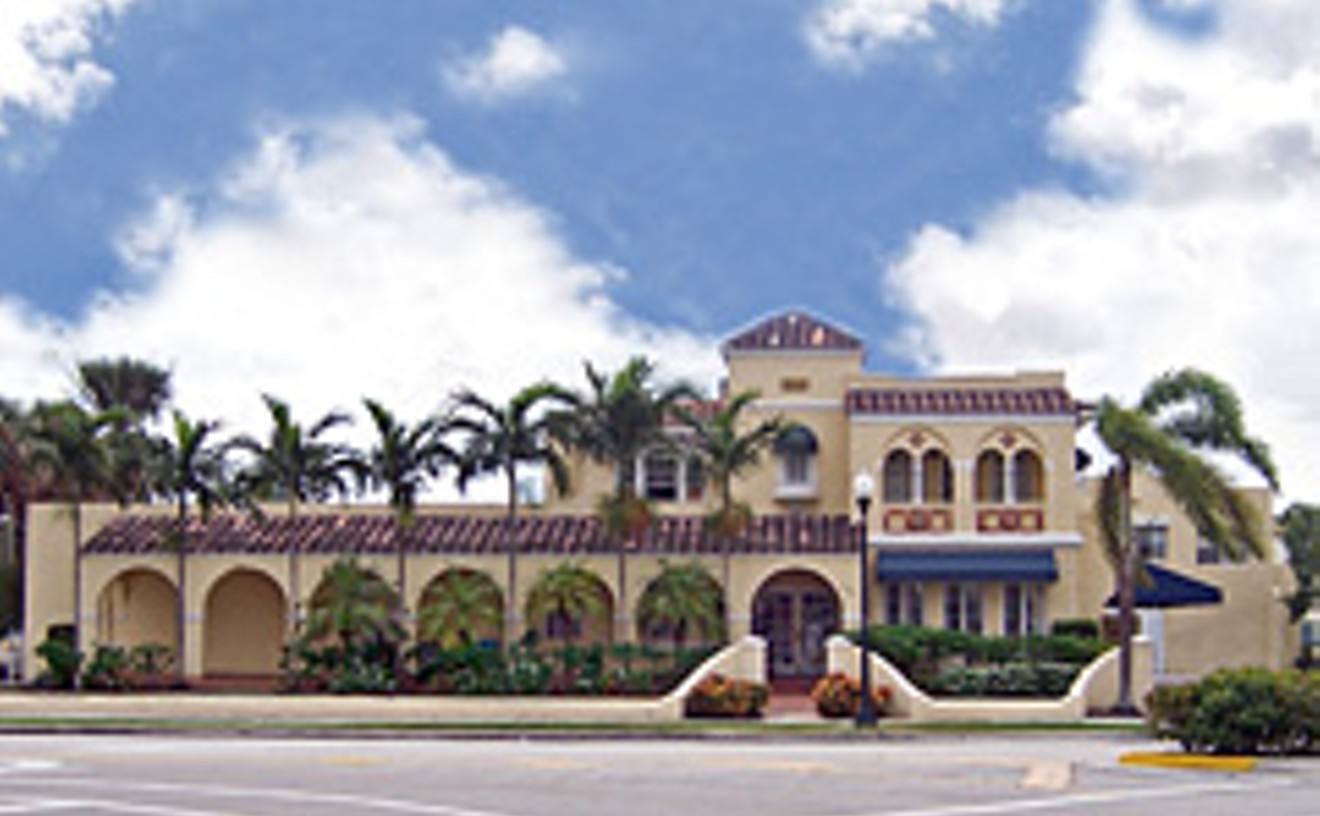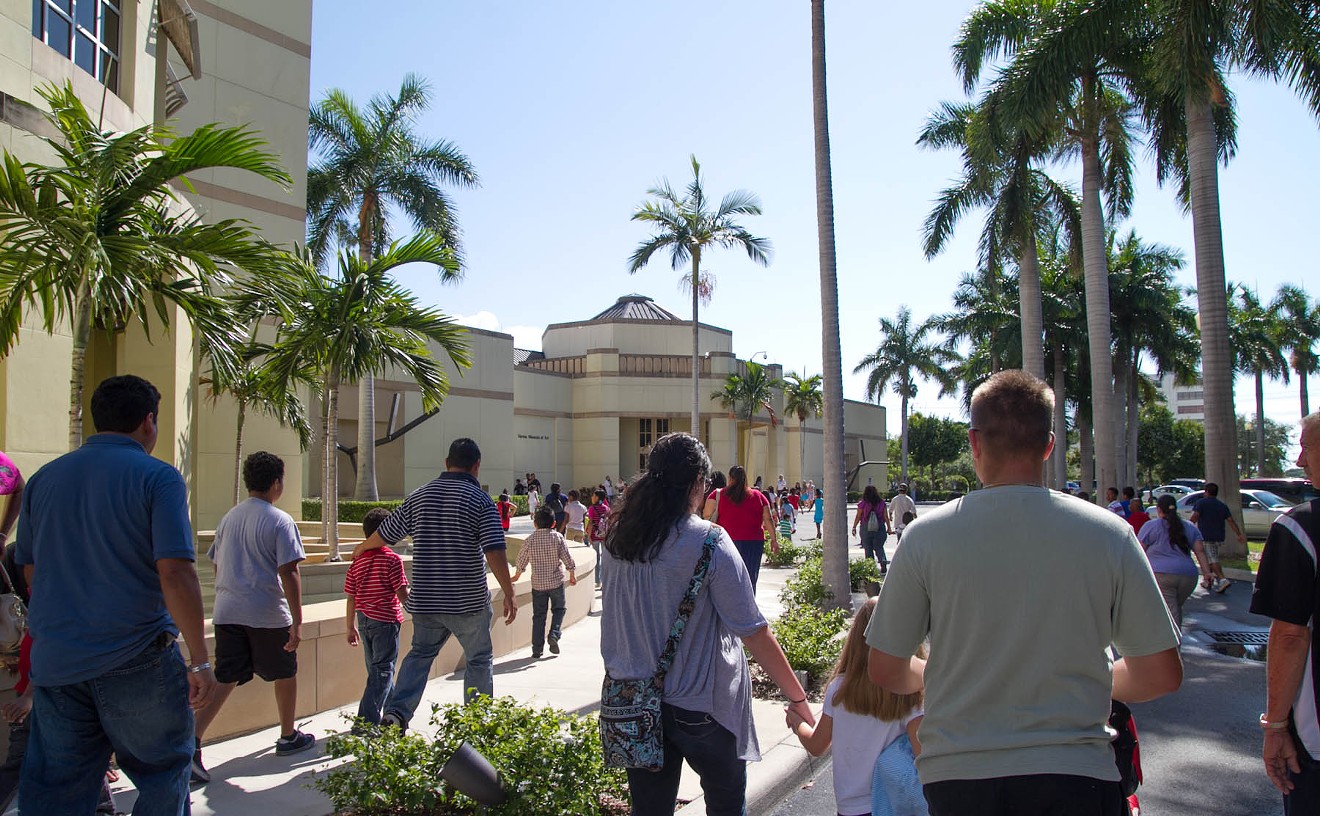Best Art Gallery
Carone Gallery
Hard times for art galleries these days. In a sluggish economy, art, for many people, becomes an expendable luxury -- something to look at, maybe, but not to buy. For those with weak willpower, even looking may become too great a temptation to risk. And so established galleries close; new ones fail to materialize. The Carone Gallery is different. Matthew Carone runs a serious gallery for serious collectors: so serious, in fact, that the gallery, just off Las Olas Boulevard, is open by appointment only. No waltzing in off the street to browse. But Carone, himself a widely respected painter who had a small, excellent one-man show at the Boca Raton Museum of Art last year, is important for another reason. For the past two years, he has joined Susan Buzzi and the Broward Art Guild in saving the Hortt Competition after it was abandoned by Fort Lauderdale's Museum of Art. The guild's gallery was a woefully inadequate display space for the large show, so Carone graciously volunteered his gallery. For that alone, the area arts community should be eternally grateful to him.
Best Art Gallery
Carone Gallery
Hard times for art galleries these days. In a sluggish economy, art, for many people, becomes an expendable luxury -- something to look at, maybe, but not to buy. For those with weak willpower, even looking may become too great a temptation to risk. And so established galleries close; new ones fail to materialize. The Carone Gallery is different. Matthew Carone runs a serious gallery for serious collectors: so serious, in fact, that the gallery, just off Las Olas Boulevard, is open by appointment only. No waltzing in off the street to browse. But Carone, himself a widely respected painter who had a small, excellent one-man show at the Boca Raton Museum of Art last year, is important for another reason. For the past two years, he has joined Susan Buzzi and the Broward Art Guild in saving the Hortt Competition after it was abandoned by Fort Lauderdale's Museum of Art. The guild's gallery was a woefully inadequate display space for the large show, so Carone graciously volunteered his gallery. For that alone, the area arts community should be eternally grateful to him.
Best Museum in Broward
Art and Culture Center of Hollywood

Not so long ago, the Art and Culture Center of Hollywood seemed to have fallen into the doldrums. After the departure of an especially adventurous curator (Laurence Pamer), the museum lacked direction and, more important, vision. But then, new curator Samantha Salzinger arrived, and the place has been on a roll ever since. Salzinger's "Fat Painting" show was a defiant celebration of the enduring influence of abstract expressionism that left some critics (although not ours) scratching their heads. "Modus Operandi" ventured even further with its eclectic blend of photography, mixed-media works, and installations, including one -- Bill Burke's Thin Spaces -- that turned a whole gallery of the museum into an alien environment engaging all the senses. Most recently, Salzinger snagged Pamela Joseph's traveling exhibition "The Sideshow of the Absurd," an extended multimedia installation of carnival-inspired (and feminist-tinged) pieces that was easily one of the most bizarre shows of the past year. Let's hope the Art and Culture Center is brave enough to let Salzinger continue her winning streak.
- 1650 Harrison St., Hollywood, 33020 Map
- 954-921-3274
- www.artandculturecenter.org
Best Museum in Broward
Art and Culture Center of Hollywood
Not so long ago, the Art and Culture Center of Hollywood seemed to have fallen into the doldrums. After the departure of an especially adventurous curator (Laurence Pamer), the museum lacked direction and, more important, vision. But then, new curator Samantha Salzinger arrived, and the place has been on a roll ever since. Salzinger's "Fat Painting" show was a defiant celebration of the enduring influence of abstract expressionism that left some critics (although not ours) scratching their heads. "Modus Operandi" ventured even further with its eclectic blend of photography, mixed-media works, and installations, including one -- Bill Burke's Thin Spaces -- that turned a whole gallery of the museum into an alien environment engaging all the senses. Most recently, Salzinger snagged Pamela Joseph's traveling exhibition "The Sideshow of the Absurd," an extended multimedia installation of carnival-inspired (and feminist-tinged) pieces that was easily one of the most bizarre shows of the past year. Let's hope the Art and Culture Center is brave enough to let Salzinger continue her winning streak.
Best Museum in Palm Beach
Norton Museum of Art

The grande dame of South Florida museums just got grander: In March, the Norton continued its astonishing expansion with a new 45,000-square-foot, 14-gallery wing that brings the place to a total of 122,500 square feet, making it the largest art museum in the state. This follows the expansion and renovations of the early 1990s, which transformed a small, dignified facility into a cultural institution worthy of its holdings. And those holdings are vast -- so vast that the museum has never quite figured out how to showcase them properly, trotting out selections from time to time but never really finding a way to emphasize the depth and breadth of the permanent collection. Founders Ralph and Elizabeth Norton kicked off that collection in 1941 with an emphasis on European art after 1870, including works by Picasso, Matisse, Gauguin, Braque, Monet, Renoir, Brancusi, and Camille Pissarro. Other subsets of the permanent collection include photography (Julia Margaret Cameron, August Sander, Philippe Halsmann), contemporary art (Duane Hanson, Frank Stella), European art before 1870 (Courbet, Rubens), and American art (Georgia O'Keeffe, Jackson Pollock). The Chinese collection includes pieces ranging from the 12th Century B.C. to the early 18th Century. The new three-floor wing, which includes a dramatic atrium featuring a dazzling glass ceiling installation by Dale Chihuly, will give the permanent collection room to breathe as large segments of it are rotated, while the rest of the museum will continue to play host to such shows as the recent "Fire and Form: The Art of Contemporary Glass." Now if the Norton could just come up with enough parking to satisfy those crowds it's already attracting.
- 1451 S. Olive Ave., West Palm Beach, 33401 Map
- 561-832-5196
- www.norton.org
Best Museum in Palm Beach
Norton Museum of Art
The grande dame of South Florida museums just got grander: In March, the Norton continued its astonishing expansion with a new 45,000-square-foot, 14-gallery wing that brings the place to a total of 122,500 square feet, making it the largest art museum in the state. This follows the expansion and renovations of the early 1990s, which transformed a small, dignified facility into a cultural institution worthy of its holdings. And those holdings are vast -- so vast that the museum has never quite figured out how to showcase them properly, trotting out selections from time to time but never really finding a way to emphasize the depth and breadth of the permanent collection. Founders Ralph and Elizabeth Norton kicked off that collection in 1941 with an emphasis on European art after 1870, including works by Picasso, Matisse, Gauguin, Braque, Monet, Renoir, Brancusi, and Camille Pissarro. Other subsets of the permanent collection include photography (Julia Margaret Cameron, August Sander, Philippe Halsmann), contemporary art (Duane Hanson, Frank Stella), European art before 1870 (Courbet, Rubens), and American art (Georgia O'Keeffe, Jackson Pollock). The Chinese collection includes pieces ranging from the 12th Century B.C. to the early 18th Century. The new three-floor wing, which includes a dramatic atrium featuring a dazzling glass ceiling installation by Dale Chihuly, will give the permanent collection room to breathe as large segments of it are rotated, while the rest of the museum will continue to play host to such shows as the recent "Fire and Form: The Art of Contemporary Glass." Now if the Norton could just come up with enough parking to satisfy those crowds it's already attracting.
Best Proof that Minimalism Lives
Telephone Piece (1997/2001) by Yoko Ono"YES YOKO ONO"
Depending upon your source, minimalism ended in the mid-1970s. Tell that to Yoko Ono. The notorious Beatle widow has never been one to heed the dictates of the art world, as she demonstrated in a recent landmark retrospective at the Museum of Contemporary Art. The piece? A simple white Slimline telephone, with an equally simple instruction posted nearby: "When the telephone rings, pick up the receiver and talk to Yoko Ono." And for the show's three-month run, Ono made random calls and chatted with whoever answered. You can't get much more minimal than that.
Best Proof that Minimalism Lives
Telephone Piece (1997/2001) by Yoko Ono"YES YOKO ONO"
Depending upon your source, minimalism ended in the mid-1970s. Tell that to Yoko Ono. The notorious Beatle widow has never been one to heed the dictates of the art world, as she demonstrated in a recent landmark retrospective at the Museum of Contemporary Art. The piece? A simple white Slimline telephone, with an equally simple instruction posted nearby: "When the telephone rings, pick up the receiver and talk to Yoko Ono." And for the show's three-month run, Ono made random calls and chatted with whoever answered. You can't get much more minimal than that.
Best Solo Art Exhibition
"Maria Martínez-Cañas: A Retrospective"
Photography has a very good friend in Maria Martínez-Cañas, whose retrospective at Fort Lauderdale's Museum of Art last year was her first one-woman show at a South Florida museum. The Cuban-born, Puerto Rican-reared, Miami-based artist in a very real sense reinvents photography, transforming it into a hybrid medium better suited to her needs. She's smart to steer clear of digitally manipulated photography, which is still new enough to come across, in most hands, as gimmicky and contrived, but she also eschews what we usually think of as photography: no portraits, no still lifes, no landscapes, at least not in any ordinary sense. Instead, Martínez-Cañas incorporates drawing and collage into her photographs, manipulating the imagery in her own ways to make it extraordinarily expressive -- she snips photographs into fragments that she then uses as compositional elements, or she takes them apart and reassembles them in unexpected ways. At a time when the medium is just over a century old and still coming to terms with its long-fought-for status as an art form, Martínez-Cañas takes that status for granted and runs with it.
Best Solo Art Exhibition
"Maria Martínez-Cañas: A Retrospective"
Photography has a very good friend in Maria Martínez-Cañas, whose retrospective at Fort Lauderdale's Museum of Art last year was her first one-woman show at a South Florida museum. The Cuban-born, Puerto Rican-reared, Miami-based artist in a very real sense reinvents photography, transforming it into a hybrid medium better suited to her needs. She's smart to steer clear of digitally manipulated photography, which is still new enough to come across, in most hands, as gimmicky and contrived, but she also eschews what we usually think of as photography: no portraits, no still lifes, no landscapes, at least not in any ordinary sense. Instead, Martínez-Cañas incorporates drawing and collage into her photographs, manipulating the imagery in her own ways to make it extraordinarily expressive -- she snips photographs into fragments that she then uses as compositional elements, or she takes them apart and reassembles them in unexpected ways. At a time when the medium is just over a century old and still coming to terms with its long-fought-for status as an art form, Martínez-Cañas takes that status for granted and runs with it.





